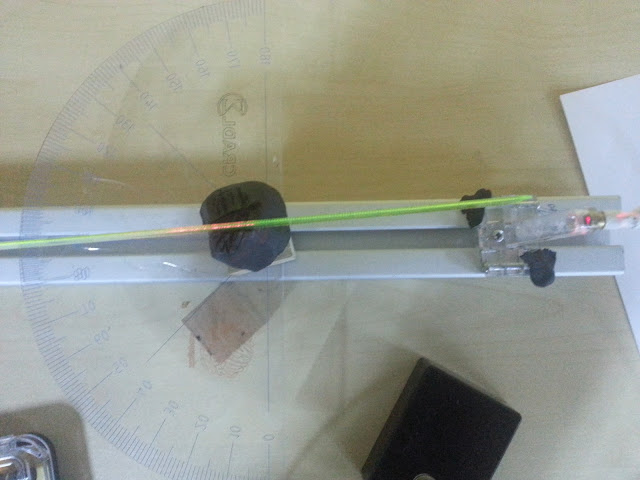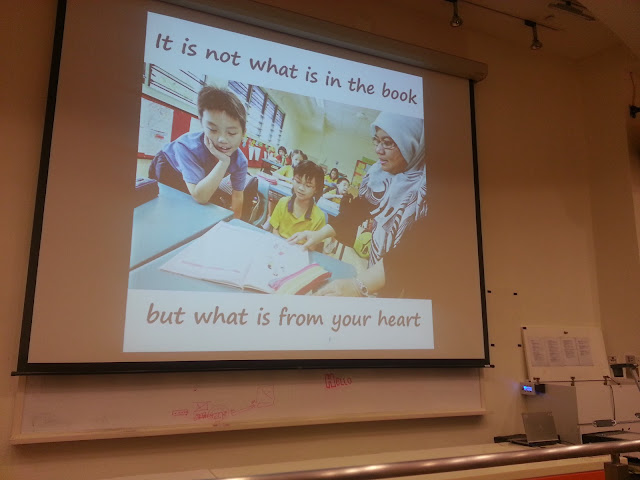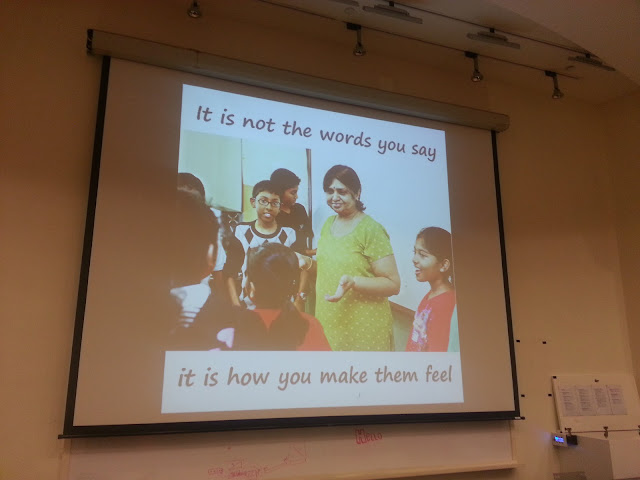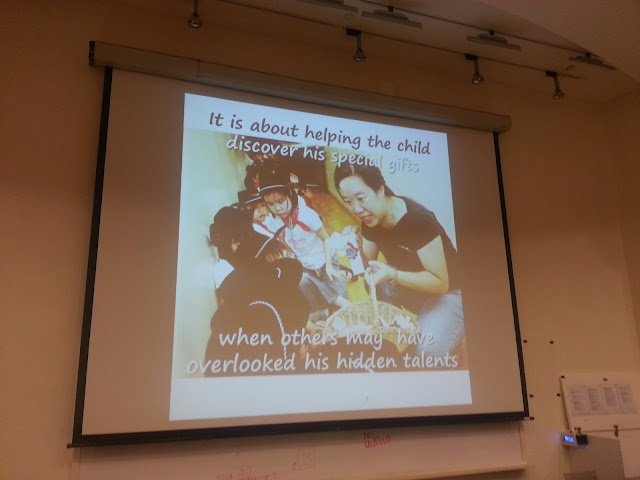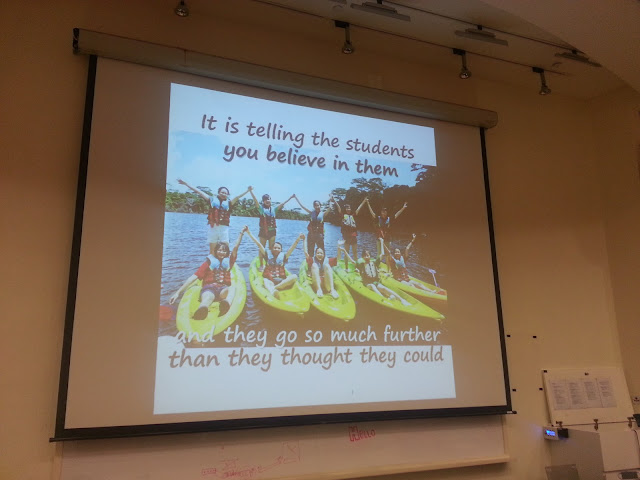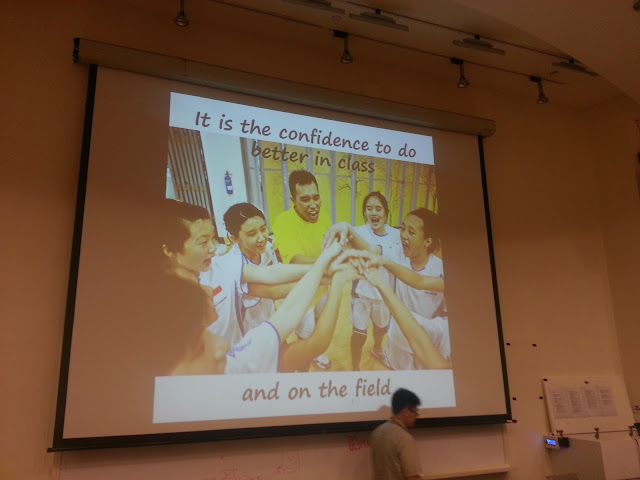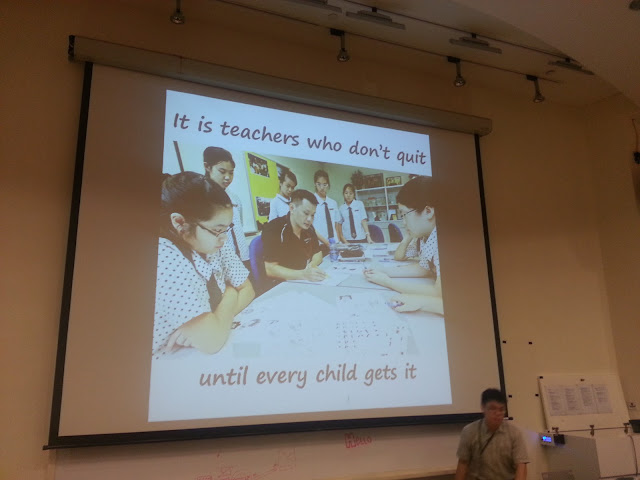http://weelookang.blogspot.sg/2013/05/physics-chapter-at-science-centre-02.html
Physics Chapter at Science Centre 02 April 2013
an interesting demo to figure out diffraction after reflecting off a flat surface.
text taken from science centre singapore http://www.science.edu.sg/schoolprogrammes/Pages/Cradle-ArduinoWorkshop.aspx#cradle_diffractionDiffraction as Metrology Tool
The study of light has been a major topic since the time of the ancient Greeks. In early 18th century, Sir Isaac Newton proposed that light must be corpuscular, i.e. made up of particles, to explain the straight line propagation of light. Newton’s particle theory was supported by many scientists. It wasn’t until early 19th century that the wave theory of light gained popularity when Thomas Young demonstrated diffraction effects using two closely spaced slits. Both Newton and Young’s work laid the foundation for analysing crystal structures using X-ray diffraction (Laue and Bragg) as well as the discovery of the wave-particle duality in light many years later.
In this workshop, participants will explore how light interacts with small structures to cause diffraction effects, and make use of the observed patterns to determine properties of light (e.g. wavelength) or the microscopic properties of the diffracting objects. The experiments are closely related to important practical applications such as spectral analysis, x-ray structure analysis and optical data storage. This workshop also demonstrates how simple, inexpensive experiments can be carried out to achieve remarkably accurate results. For instance, participants will be able to measure the wavelength of light, which is smaller than a micrometer, accurately using a common ruler.
Mode of Delivery Practical lab session
Target Audience Sec 3-4*. Junior College and Polytechnics.
* While this workshop covers concepts of A-level physics syllabus, it is also suitable for upper secondary students with an aptitude for science. Workshop materials can be customised according to the learning needs of participants upon request.
Topics Light. Waves. Geometric optics (real and virtual images). Superposition and interference. Diffraction (using transmissive and reflective gratings). Spectral lines. Babinet’s principle.
 |
| front view of setup at science centre to explore diffraction as it is available http://www.science.edu.sg/schoolprogrammes/Pages/Cradle-ArduinoWorkshop.aspx#cradle_diffraction photo taken by lookang |
 |
| top view of setup at science centre to explore diffraction as it is available http://www.science.edu.sg/schoolprogrammes/Pages/Cradle-ArduinoWorkshop.aspx#cradle_diffraction photo taken by lookang |
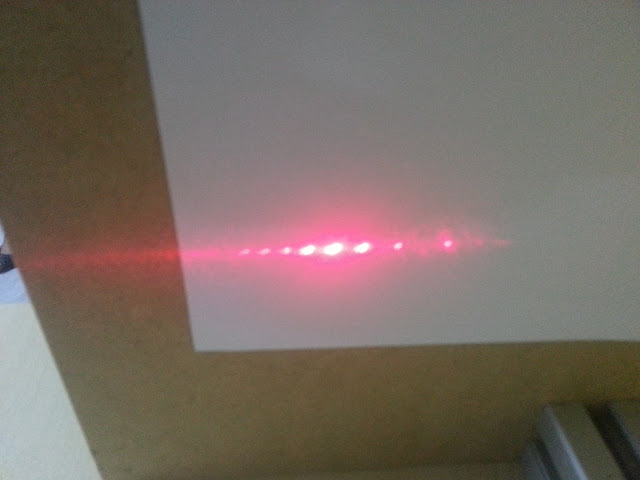 |
| diffraction pattern results from a laser beam diffracting and reflecting off a simple ruler |
 |
| since the ruler has 1 mm as the minimum spacing, with the help of the protractor, measurement is made of 2 degree . using the formula sin 2 = d/1x10^-3 |
 |
| using sin θ = n λ/ d, observing the first order n =1, calculating gives an estimate of the λ = 1x10^-6 m order of magnitude found for red light! which is actually 700x10^-9 m |

